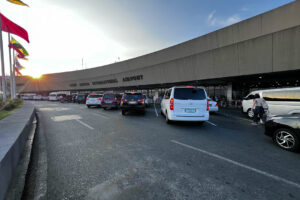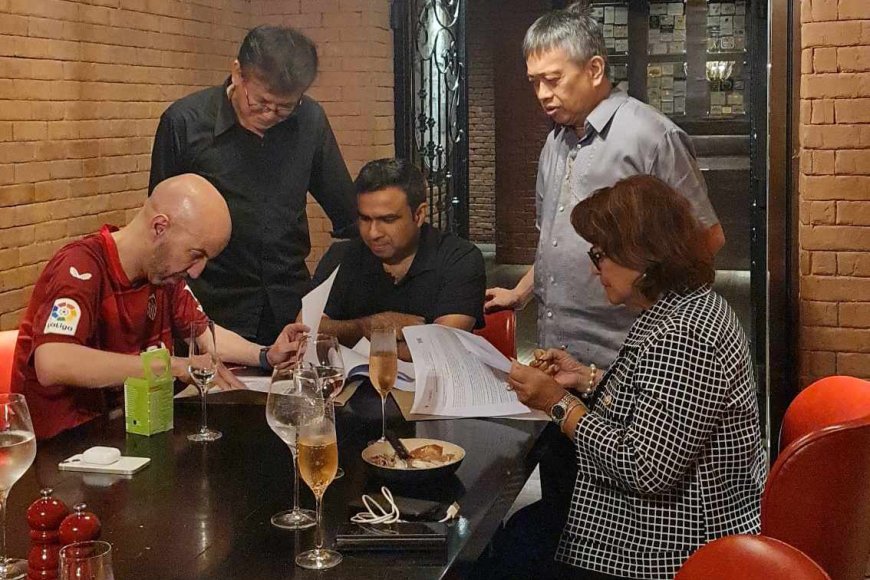NAIA: Now comes the hard part
The Bureau of the Treasury was reported to have recently received P30 billion in upfront payment from San Miguel Corp. (SMC) as its New NAIA Infrastructure Corp. (NNIC) took over from the government the operations of the Ninoy Aquino International Airport (NAIA) complex consisting of four terminals and two runways. In March, SMC won the […]

The Bureau of the Treasury was reported to have recently received P30 billion in upfront payment from San Miguel Corp. (SMC) as its New NAIA Infrastructure Corp. (NNIC) took over from the government the operations of the Ninoy Aquino International Airport (NAIA) complex consisting of four terminals and two runways.
In March, SMC won the bid to rehabilitate and modernize NAIA. Last week was the official turnover of NAIA’s operations and maintenance to NNIC, in line with its 15-year modernization program to improve the gateway. The government expects to receive around P900 billion during the 15-year concession period through yearly payments plus a share in airport revenues.
If NNIC does well, its concession to operate NAIA can be extended by 10 years. Its target is to increase airport capacity to 62 million from 35 million passengers annually, and to raise flights to 48 from 40 per hour. One can only hope that the Marcos II Administration, through NNIC, will succeed where many other administrations have failed: making NAIA efficient.
If memory serves me, one of the more famous examples of airport privatization was London’s Heathrow, which was turned over to private operators in 1987. Heathrow is said to be the first ever privatized airport, following the sale of the British Airports Authority (BAA). Heathrow Airport Holdings successfully improved airport capacity, efficiency, and passenger services.
In 2001, Lima, Peru’s Jorge Chavez International Airport was also privatized. It is now one of the busiest hubs in South America. Sydney Airport in Australia followed in 2002, then Mumbai International Airport in India in 2006. In Germany, Frankfurt Airport is only partially privatized with the involvement of privately owned Fraport AG. Many other airports were privatized after.
Over here, NNIC’s payment of P30 billion is just the start. What comes after is the hard part. Obviously, NAIA’s rehabilitation will not happen overnight. Meantime, as the airport complex undergoes modernization, there will be plenty of birth pains to experience. On average, airport privatization typically begins to show positive results after three to five years.
For sure, there will be plenty of confusion during the transition of airport management to NNIC. Moreover, as NNIC undertakes infrastructure development, parts of the airport complex will have to be closed for renovation. While management change can result in operational improvements, significant operational efficiencies such as faster processing times and improved passenger experience can be expected only after the development phase.
The goal is for NAIA to accommodate more passengers and aircraft. But even with increased volumes, there should be reduced passenger processing times and better utilization of airport resources, and higher standards of customer service and user satisfaction. It is only after this that the airport operator can expect better profitability from aeronautical revenues (fees from airlines) and non-aeronautical revenues (retail, parking, real estate, etc.).
This is not to say that privatization is the only solution. In fact, among the world’s best airports are several which are government-operated such as Singapore’s Changi, Tokyo’s Haneda and Narita, Doha’s Hamad, Seoul’s Incheon, Paris’ Charles De Gaulle, Hong Kong’s International Airport, and Germany’s Munich airport.
The Changi Airport Group is under the Singapore government. Haneda is run by Japan Airport Terminal Co., Ltd. and the Japanese government, while Narita is run by the government-owned Narita International Airport Corp. Doha Hamad is operated by Qatar Airways, which is a state-owned enterprise, while Incheon International Airport Corp. is also state-run.
Charles de Gaulle is managed by the partly privatized Groupe Aéroports de Paris, while Munich Airport is operated by Flughafen München GmbH, which is majority-owned by the German government. Hong Kong International Airport is managed by the Airport Authority Hong Kong, a statutory body.
In the case of NAIA, I believe SMC is utilizing the expertise of the Incheon International Airport Corp. (IIAC). But considering that IIAC is 100% owned by Korea’s Ministry of Land, Infrastructure, and Transport, does this mean that a foreign government agency is going to be part of the consortium that would now run the Philippines’ main international airport?
Bottomline, NAIA is in dire need of rehabilitation. Its Runway 06/24 and taxiways are 70 years old, while its Terminal 1 is 43 years old. The control tower is also around 61 years old. Terminal 3, the newest terminal, was opened 16 years ago. Runway 13/31 is even older than 06/24, having been part of Nichols Airfield since World War II.
The Manila airport started operations in 1935 in Grace Park, Caloocan. In 1937, Nielson Airport opened in Makati, with what is now Ayala Avenue and Paseo De Roxas as parts of its runways. Nielson was closed in 1948, after the war, and airport operations were moved to its present site adjacent to Nichols Air Base (now Villamor) and made use of the base runway (13/31).
A longer international runway (06/24) was built in 1954, while the construction of a control tower and international terminal did not start until 1956. The international terminal was opened in 1961, but was closed after a fire in 1972. A smaller terminal was built beside it and this was used until Terminal 1 was opened in 1981. Terminal 2 was built in the 1990s. Terminal 3 partially opened in 2008.
As I have written before, it is obvious that NAIA is operating beyond capacity and is in desperate need of expansion and modernization. I used to think that rehabilitation would do little to improve capacity unless new runways were added. But I have been recently made to believe that even with just two runways, NAIA can still be made more efficient and more comfortable.
To airline passengers and other airport users, I doubt very much if it matters whether an airport is managed and operated by the government or a private corporation. After all, what counts is how service is delivered, and not necessarily who delivers it. As for ownership, being strategic public assets, I believe that airports should remain state-owned.
In NAIA’s case, it will remain state-owned. Only operations were privatized. The Cebu and Clark airports are also owned by the government. But the Mactan-Cebu International Airport is now operated by GMR Megawide Cebu Airport Corp. while Clark International Airport is run by Luzon International Premier Airport Development Corp. Cebu and Clark are seemingly better run than NAIA to date. So, with the privatization, there is still hope for NAIA.
Marvin Tort is a former managing editor of BusinessWorld, and a former chairman of the Philippine Press Council























